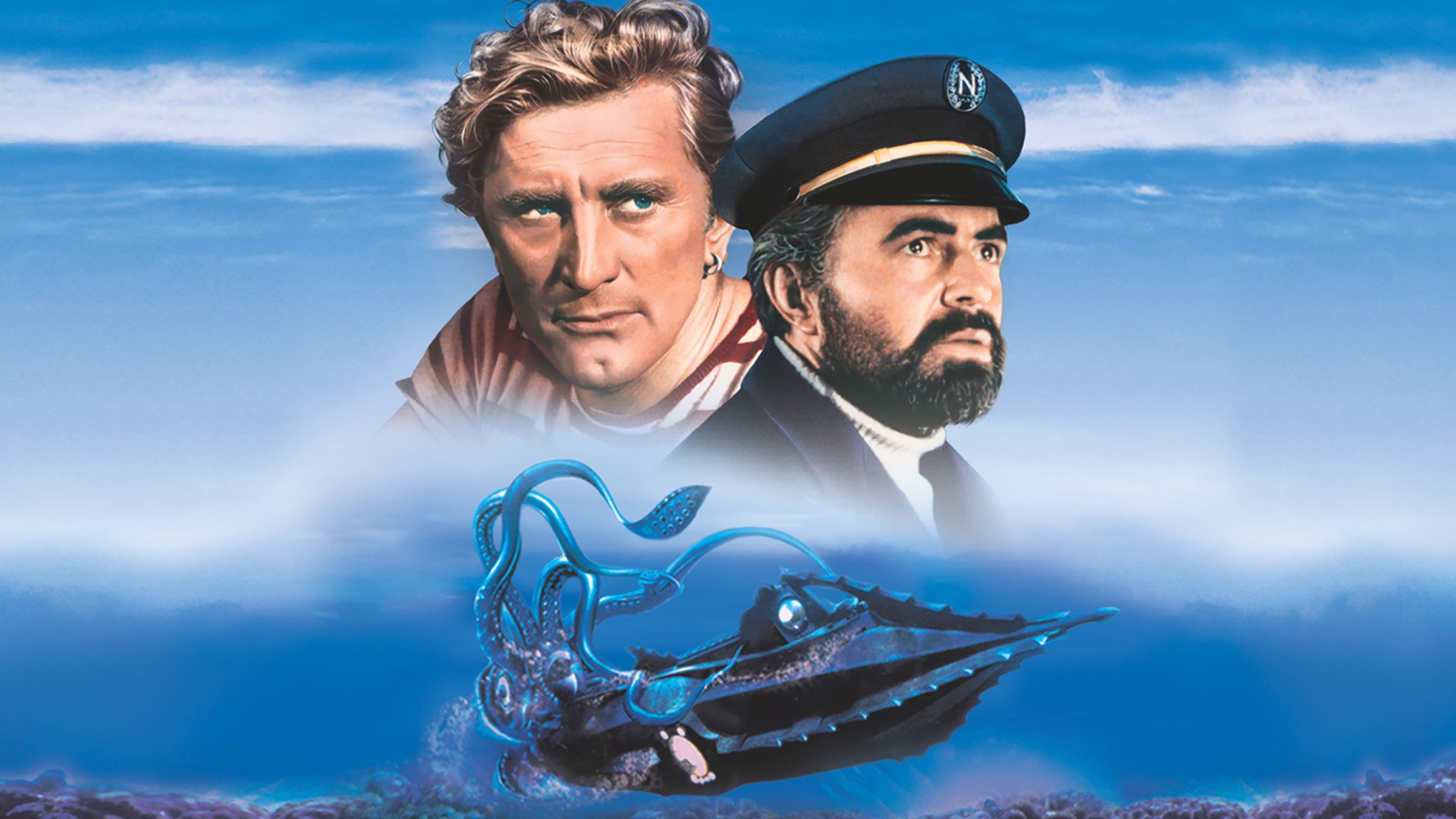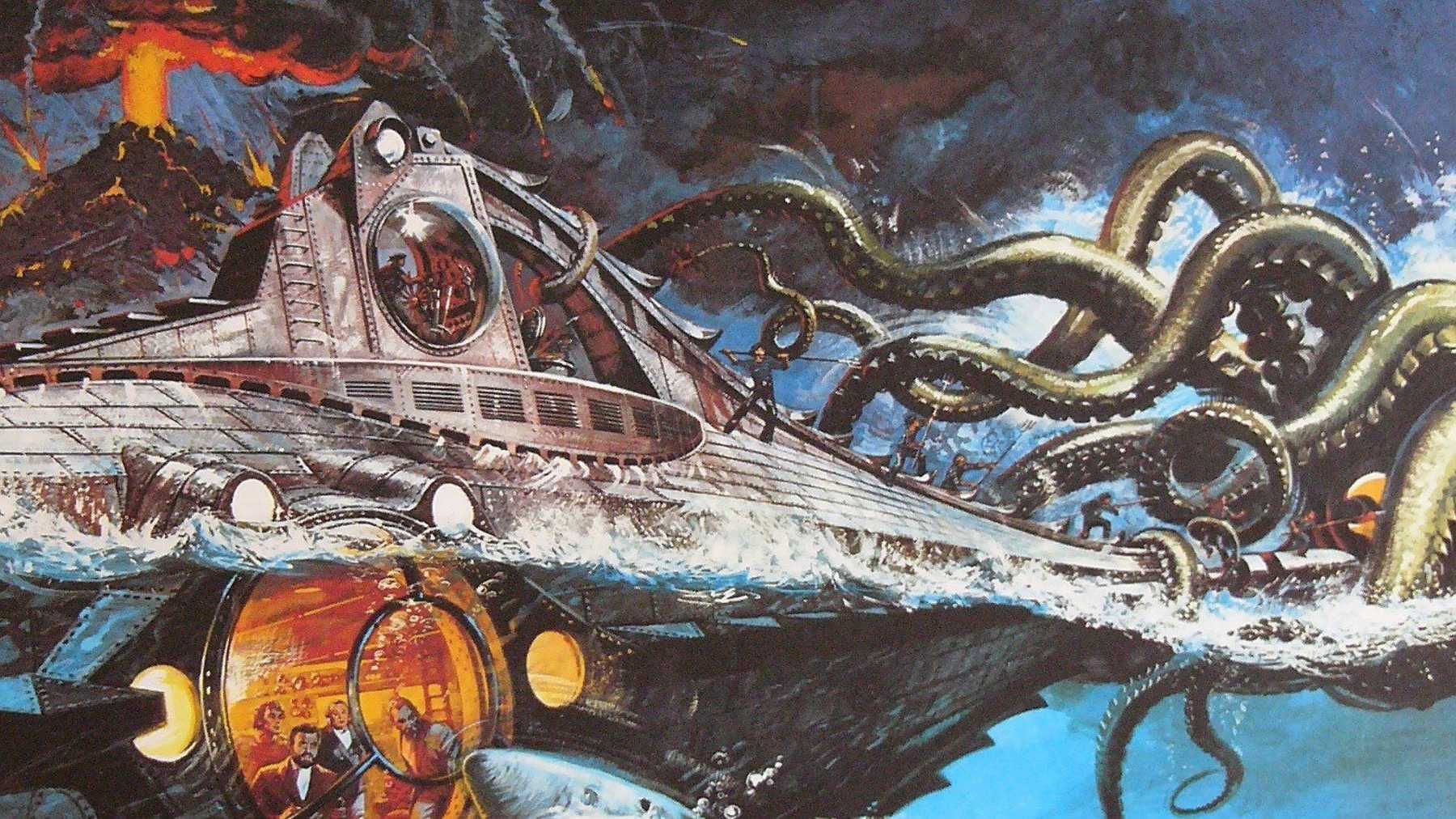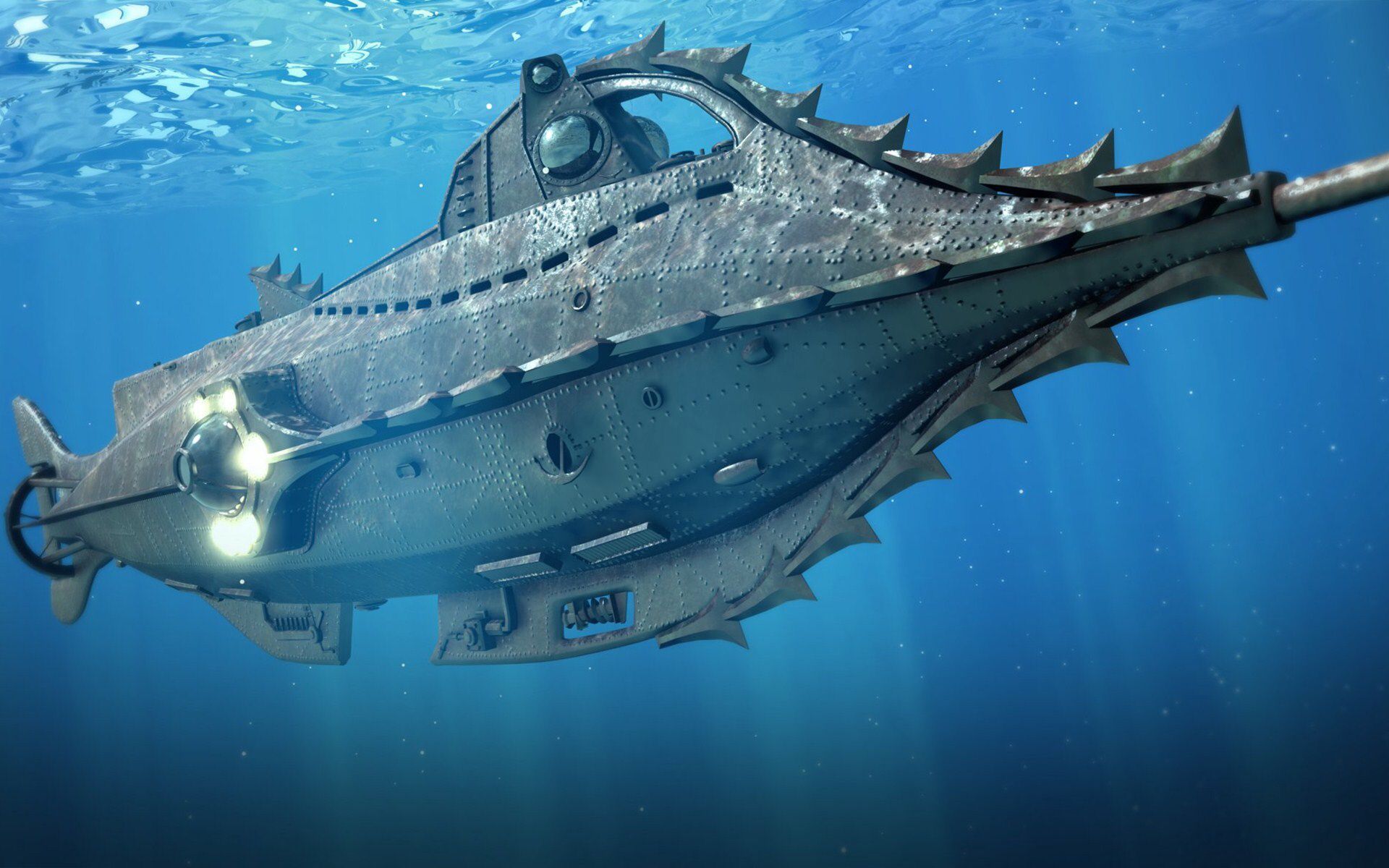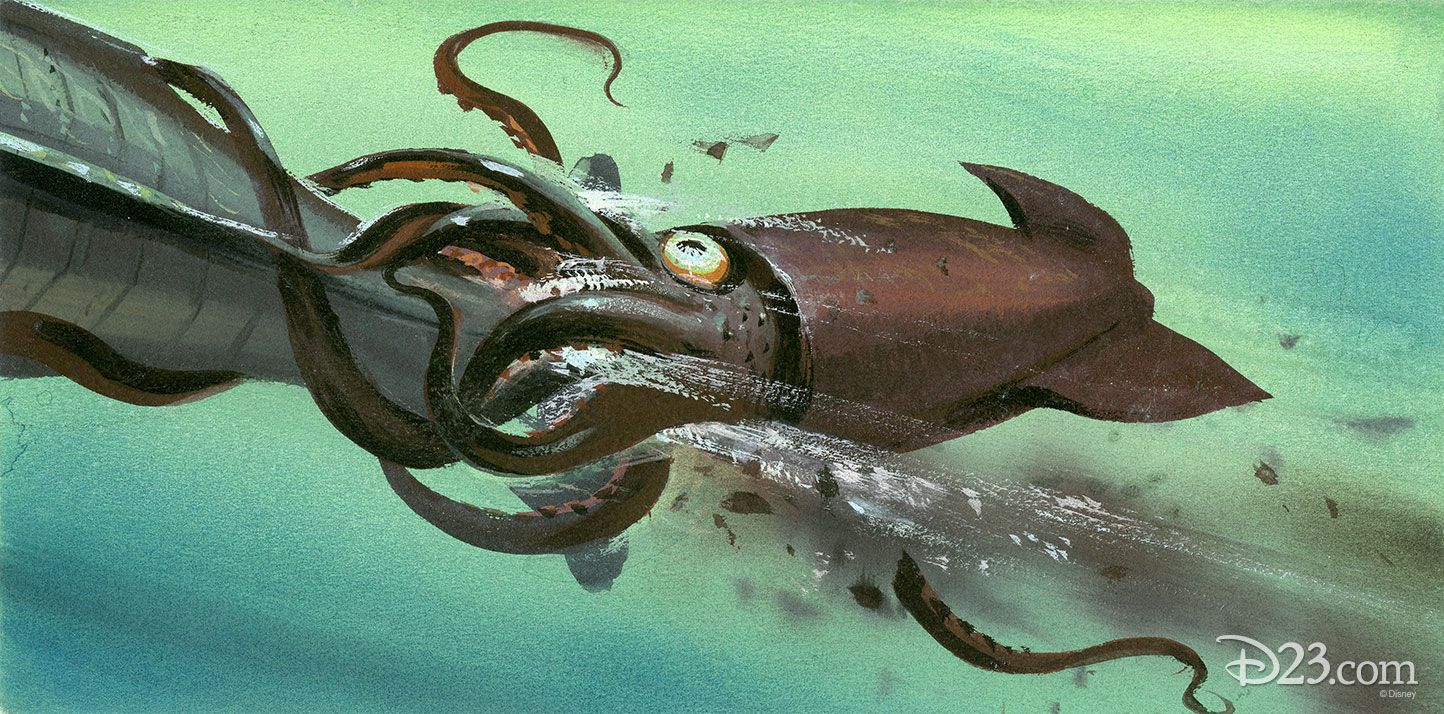In anticipation of the release of 'Mank' on December 4, this week Collider will be presenting original essays and features diving into the work of David Fincher.
David Fincher, like Guillermo del Toro and Ridley Scott, is a filmmaker as famous for the movies that he made as for the ones that never got off the drawing board. His entire career, in fact, is littered with tantalizing what-ifs (before shifting to Mank, he was prepping a sequel to Brad Pitt zombie epic World War Z). But there was one project, above all others, that captures the imagination like no other, and got damnably close to production before it all fell apart – Disney’s big budget, 3D version of 20,000 Leagues Under the Sea.
Disney’s ties to 20,000 Leagues Under the Sea, Jules Verne’s classic adventure tale (originally serialized between March 1869 and June 1870), date back to 1954, when it released Richard Fleischer’s live-action adaptation. That film, which memorably starred Kirk Douglas and James Mason (as Captain Nemo), was proof that Disney could make movies that are just as imaginative and thrilling in live-action as he could in animation. (The movie’s special effect centerpiece was a giant mechanized squid, truly cutting edge for the time.) While the movie was a smash at the box office (it was the third highest grossing movie of the year), it was truly immortalized in the Disney parks. The year after the movie opened, there was a walkthrough attraction in Disneyland’s anemic Tomorrowland area featuring props and costumes from the movie, and in 1959 the Submarine Voyage offered in the same land, tangentially connected to the movie. It was more explicitly tied to Walt Disney World’s 20,000 Leagues Under the Sea: Submarine Voyage, which opened on October 14, 1971. (There are also themed areas in the Paris and Tokyo parks.) And 20,000 Leagues Under the Sea lived, for decades, in the imagination of those who visited these parks. Even if you weren’t familiar with the movie, you knew about the Nautilus submarine, the fearsome exploits of Captain Nemo, and the horrors that lurked in the depths of the ocean.
In January 2009, Variety reported that Disney was looking to mount a remake of 20,000 Leagues Under the Sea with Charlie’s Angels director McQ. By February, Will Smith had become attached to play Captain Nemo and screenwriter Justin Marks was brought on to work on the script by Déjà vu’s Bill Marsilii, which was described as being “fast tracked.” (Smith would eventually star as the genie in last year’s Aladdin and Marks would pen Disney’s live-action Jungle Book remake.) Braveheart screenwriter Randall Wallace would subsequently work on the script, which had a tentative 2010 production start date. But by November 2009, McQ had left the project due to “creative differences.” Variety cheekily said that Disney had “beached” the project.
But the project didn’t stay submerged for long. By May 2010, it had been announced that Fincher would be tackling the project with Scott Z. Burns, screenwriter of Steven Soderbergh’s The Informant and Contagion handling scripting duties. At the end of 2010 he told Collider (hey, that’s us!) that the movie would be in 3D, admitting that the extra dimension is “cool ... when it’s done right.” The following year Fincher offhandedly remarked that the film would be “70% CG” and in November it was announced that Andrew Kevin Walker, who had written Seven and done uncredited work on several subsequent Fincher projects, would be overhauling Burns’ script. At the end of 2011, he explained to MTV what he liked about the project specifically: “I was alive when a man stepped on the moon. It was awe-inspiring, the notion of that much care that NASA took. I’m sure it was the same thing for the Manhattan Project. The idea of a post-Civil War version of science fiction and the notion of being able to breathe underwater was so radical in its thinking. That’s pretty cool. If you’re going to do big tentpole teenage PG-13 summer movies, it’s kind of cool that it would be this.” Yes please.
In 2012, in an unusually detailed post, Variety said that Disney had put Fincher on a three-month hold as they figure out what, exactly, to do with the project. This was in an attempt to rein in the project, on the heels of the costly debacle of John Carter (which was roughly set in the same time period and featuring a similar, steam punk-y aesthetic) and considering they were still dealing with the ongoing headache of The Lone Ranger, due out the following summer. In the same post, it was noted that Fincher was going after frequent collaborator Brad Pitt to play Ned Land (the role Kirk Douglas played in the original). In November 2012, while promoting Killing Them Softly, Pitt told MTV that he would be down for boarding the Nautilus for Fincher. “I’d love to I mean, he’s my man. He’s got a great take on it. That’s just gonna be about schedule and time allocation, but he’s my man,” Pitt told the outlet.
But by February 2013, Fincher was meeting with the Australian federal arts minister Simon Crean, as the country was offering a healthy tax incentive to get the production to shoot down under. (The Hollywood Reporter pegs the number at $19 million.) They were looking at places like the Village Roadshow Studios and the Fox Studios in Sydney and the production was going to generate more than 2,000 jobs for Australian locals. But at this point the notoriously finnicky Pitt had officially passed, continuing a pattern that he had established when agreeing to do Darren Aronofsky’s The Fountain and ejecting at the last minute (after sets had been constructed). He instead chose to star in David Ayer's Fury.
That same month I asked Burns about the project. Burns, who was promoting his new Soderbergh collaboration Side Effects, seemed optimistic that the project was creeping towards production (“I think they're getting closer to pulling the trigger”). “"I think both of our goal was to make Captain Nemo, as he is in the book, a very complicated character, because there's some things that he say says and explores that are really profound and amazing but there is some behavior that he engages in that is horrific and criminal," Burns told me. "And there's a really interesting triangle, between him and Ned Land and the Professor, of three things that continue to march through time since the Industrial Revolution, and that's technology and commerce and humanity. And these three things tugging at each other inside a submarine is what I wanted to get at." Burns confirmed that Walker had also worked on the script and that the movie would be shot in native 3D.
By April of 2013, Australia had upped the number they were going to give the production to $22.5 million, described as “the largest inducement it’s ever offered to a Hollywood production.” Still, in the same report, the project was described as not fully green lit by Disney as the film is “is still contingent on casting.” Sadly, by July 2013, Fincher had officially become attached to adapt Gillian Flynn’s Gone Girl, The Playlist exclusively revealed that his 20,0000 Leagues was dead and that Fincher had been off the project for months. Apparently, it came to the cast Fincher was putting together for 20,000 Leagues Under the Sea. After Pitt pulled out, Fincher went to Daniel Craig (who had just starred in the filmmaker’s The Girl with the Dragon Tattoo and was set to appear in the sequels) and Matt Damon (who had previously been attached to Fincher’s adaptation of Brian Michael Bendis’ graphic novel Torso) but both balked at the technically complicated, 140-day shoot in Australia. (The report notes that Damon’s father was dealing with cancer at the time and he didn’t want to be that far away from home.) Fincher then floated the idea of Channing Tatum, but Disney balked, instead suggesting Chris Hemsworth. That’s when Fincher decided to leave, quietly moving Andrew Kevin Walker over to overhaul Steve Zaillian’s The Girl Who Played with Fire, the next Dragon Tatoo movie. That project also never happened.
In 2014 Fincher described the project to Playboy, calling it “fucking cool.” “It was smart and crazy entertaining, with the Nautilus crew fighting every kind of gigantic Ray Harryhausen thing. But it also had this riptide to it. We were doing Osama bin Nemo, a Middle Eastern prince from a wealthy family who has decided that white imperialism is evil and should be resisted,” Fincher told the magazine. “The notion was to put kids in a place where they’d say, 'I agree with everything he espouses. I take issue with his means—or his ends.' I really wanted to do it, but in the end I didn’t have the stomach lining for it. A lot of people flourish at Hollywood studios because they’re fear-based. I have a hard time relating to that, because I feel our biggest responsibility is to give the audience something they haven’t seen.” Fincher told Playboy that he would spend the next year working with Flynn on the HBO series Utopia, another project that he would also abandon, with Flynn finally bringing it to Amazon Prime this past summer (and, honestly, it could have used Fincher’s deft touch).
The same year the director confirmed to Little White Lies the report that the movie got caught up in the casting minutia. “You get over $200 million… all motion picture companies have corporate culture and corporate anxieties,” Fincher told the British outlet. “Once we got past the list of people we could cast as the different characters in the film, once we got past one or two names which made them very comfortable, making a movie at that price, it became this bizarre endeavor to find which three names you could rub together to make platinum... I just wanted to make sure I had the skill-sets I could turn the movie over to. Not worrying about whether they're big in Japan.” So there you have it. Corporate politics poked holes in the hull; casting disagreements sunk it. And the commercial and critical indifference to John Carter and The Lone Ranger definitely didn’t help matters.
Years later, I would find out that 20,000 Leagues Under the Sea got a lot closer than you might have thought. Apparently it got to the point that a full-sized model of Fincher’s version of the Nautilus was trotted out for marketing meetings. They were bullish and excited. And Disney finally used that Australian tax credit in 2015 when filming of Pirates of the Caribbean: Dead Men Tell No Tales began. And Disney was still not ready to give up on the material, with news in 2016 that The Wolverine filmmaker James Mangold had boarded the project, with a new version of the script (most recent revisions by Sebastian Gutierrez) and a new title (Captain Nemo), leading some to believe it was more of a prequel project. Since that announcement, there hasn’t been much movement. Mangold went on to direct Logan and the Best Picture-nominated Ford vs. Ferrari and signed on to take over from Steven Spielberg for the fifth Indiana Jones adventure (tentatively set to arrive in 2022). Maybe Nemo and the rest of the crew of the Nautilus is still underwater, waiting for the right time to reemerge. But whenever Disney circles back to the project, it will be hard not to think about what could have been.




